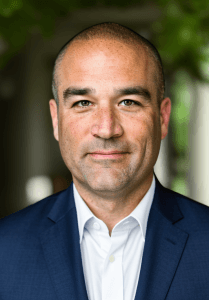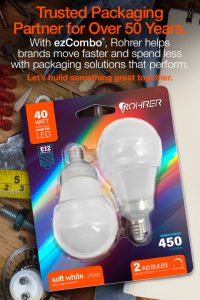My family and I watched “Mr. Mom” for movie night this week. You remember – When Dad, Michael Keaton, loses his job, he and stay-at-home Mom, Teri Garr, race to get new jobs. Mom gets hers first at an advertising agency, and Dad stays home as a hilarious “Mr. Mom.” Early in the movie, Teri Garr attends her first creative meeting with the agency designers. The room is full of smoke. All of the designers are exhausted from hours of competition and criticism. They show their fatigue through irritation or complete apathy. “Mr. Mom” is now almost 40 years old, and was one of my first exposures to the design world. But the stereotypes about the cut-throat world of design exist in humor or tragedy throughout our media – from “The Fountainhead” to “Mad Men” to an episode of “Black Mirror.”
Now, in the real world, it’s actually a treat for me to receive an invitation to meetings with designers. Every team has its own culture (and certainly some reflect the high-stakes competition in popular culture), but my Rohrer experience is less like the smoky pressure-cooker and more like a friendly workshop.
The creative team treasures requests to re-work or audit a packaging design. We believe great packaging connects brands with consumers. The collaborative process includes several steps, or check-points, which is all aimed towards designing the best solution for our partners. Recently, one of our partners invited us to their Supplier Innovation Day, and it gave us a chance to use our approach.
THE PROJECT
There are several formats for events like a Supplier Innovation Day: a mini trade show, a lunch and learn, or as in this case, a scheduled presentation and Q&A. Our client, the Senior Vice President of Supply Chain, asked each vendor partner across several club store SKU’s to review product or packaging design and look for potential improvements in design, costs, or market presentation. The product is a housewares item with a primary gadget and 8 refills. The client’s current custom packaging choice includes a trapped blister with individual compartments for each of the refills. The package is secure and cost-effective, but we are always game to make improvements.
In general, clients send most creative assignments directly to their Regional Sales Manager, and the same was true for the Supplier Innovation Day invitation. Major projects like this one kick off with a larger group, with participation from the RSM, a project manager from customer service, a marketing team member, and seven designers! We provide this service as an added value for our partners. The project team embarks on five steps to provide solutions for the client.
1. Define and Align Goals
This step is easiest when a client sends a project brief. Most of our clients are looking for our help in speed-to-market, reducing costs, or improving marketing and packaging quality. For this project, our client identified pain points in the consumer experience. When consumers open the current package, they’re annoyed with the ensuing chaos of loose refill bottles without a storage solution. Consumers also rip into the card’s billboard space, reducing the marketing value. Additionally, our client has a mission to continue to improve sustainability. In short, our client asked for cost-neutral, sustainable packaging that offers consumers reusable (and eye-catching) storage functionality. Everyone on the project team considers these goals and how any proposed solution supports them.
2. Research and Innovate
There’s nothing like a store visit to inspire and inform package design ideas. Since the client is focused on a club store package, the designers headed to the local big box store to explore packaging in the housewares aisles. Then they expanded their store tour, looking for inspiration wherever it may be. Store visits are a fun way for the team to get out of the office together, to move around and imagine new possibilities. The designers returned to the office and individually developed new packaging ideas, moving the project into the “concept stage.”
3. Meet and Critique
This is when pop culture would have us believe the fur would start flying! In our case, things were quite different.
A few days into the assignment, the team convenes to share their early drafts. Designers brought two or three drawings apiece, and within 30 minutes the group was deep in a review of contrasts and similarities of 18 designs. Throughout the quick presentations, designers checked the work against the stated goals. Their discussion included sharing similarities across ideas. They looked for wins and opportunities to enhance.
Afterwards, one designer renders the concepts in a standard look and feel. “In the past,” a designer tells me, “good ideas were rejected because of the presentation. For example, if a drawing was on lined paper, it wasn’t considered as credible as something on a clean sheet. With one design style for all the ideas, they all get a fair shot.”
In the afternoon, there’s one more meeting. There may be some more context added around a new or revised idea, but the group moves towards the vote quickly. The team narrows the broad array of ideas to the best ones by voting with sticky notes. Although our client doesn’t restrict the number of options we provide, we home in on the top three designs by vote. We run a quick check to confirm these designs all meet the goals of the assignment before proceeding.
4. Refine the Best
Refinement is a layered process. After the initial presentations and review, the Design Manager nominates a leader from the design team to produce evolved ideas. The person selected typically will be one of the creators of a top design or design collaboration, and they help maintain consistency across the final presentation. They’ll produce engineering drawings of the new packages and work with the tool room to start production. In production, we’ll test our designs and material selections. The prototypes may go through a few iterations as the team tests and assesses the package performance.
Simultaneously, the project manager writes work orders including price requests from the estimators. Having checked costs against materials, only two designs move forward. All along we confirm that we’re satisfying goals – specifically, remaining cost-neutral while improving sustainability and consumer benefits.
5. Client Presentation
The team made it from client brief to Supplier Innovation Day in about three weeks. The project presentation starts with a verification of stated goals. Acknowledging our shared understanding builds trust and context for the rest of the presentation. The presentation includes supporting data and illustrations. Our best visual aid is when we place the package prototypes in the hands of the SVP of Supply Chain and her colleagues. We don’t expect everyone to be able to “imagine a world where your packaging is better.” We provide proof.
Our Regional Sales Manager and Design Manager make the presentation. Sending the team gives our client, the SVP of Supply Chain, and her colleagues all the support they need. Through our RSM’s long-standing relationship with the SVP of Supply Chain, we can predict and prepare for certain requirements. Our Design Manager demonstrates how the designs serve their goals, and to provide expertise for any of their questions.
RESULTS
The only way to ensure we are doing our best work is to strive for continuous improvement. Are we pushing ourselves to develop new, creative packaging products and solutions? When a client asks us to take on this challenge, we embrace the opportunity! The design team talked about this project not just as a strategy session, but as a team building experience – an opportunity to improve cohesion, communication, and market knowledge.
The SVP of Supply Chain tasked our team with innovating cost-neutral, sustainable packaging that offers consumers reusable storage functionality. Our design team provided two great ideas that turned into one winner.
The new hybrid package design uses clamshells as the windows in a die-cut and perforated paperboard box. By working with Rohrer as a single provider of all packaging components, our client saves money and time. We achieved sustainability by creating incorporating recyclable paperboard, and using recycled PET for the clamshell. The package includes several features to showcase and store the product. Using paperboard gives consumers a horizontal surface for storage and we added perforations for sizing. The windows and clamshells allow visibility and added storage features. Most importantly, consumers connect with the product through a new, successful packaging solution.
Want to learn more ways you can develop innovative solutions for your product packaging?
Sign up for our blog to receive the latest packaging insights!



